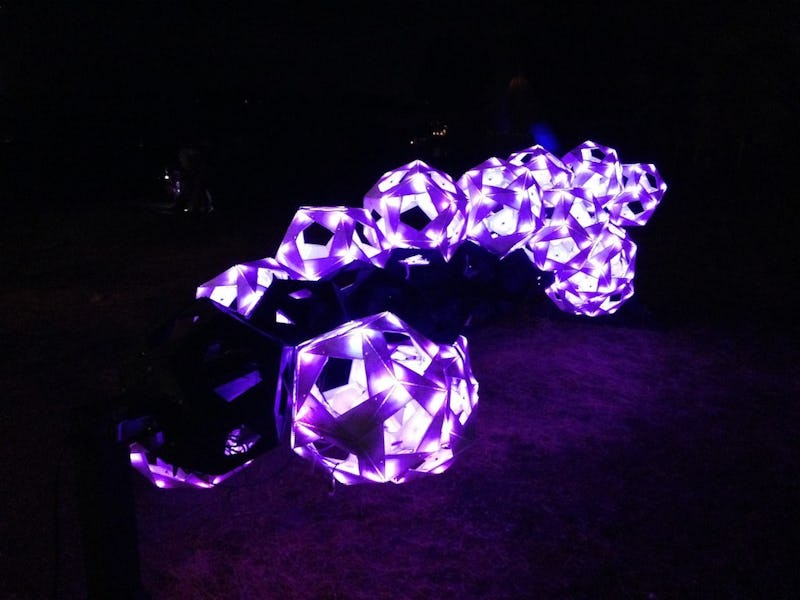If Scientists Crack DNA Data Storage, the Internet Will Fit in a Shot Glass
The startling efficiency of biological data storage could turn the cloud into a couple of drops.

The internet is running out of space. All of the Facebook updates, Twitter rants, and Instagram posts whizzing through the air ultimately need a physical home, but with the “digital universe” expected to grow to over 16 zettabytes — that’s equivalent to some 4 trillion DVDs — by next year, we’re going to need to come up with a better storage system. Fortunately, nature’s already provided us with a damn efficient one: DNA holds insane amounts of information in a microscopic amount of space. Taking this into account, a team of Microsoft researchers is attempting to harness biology to curb our reliance on data centers.
It’s an impressive effort and early results are promising. But perhaps the only way to get a sense of what a significant breakthrough DNA data storage could be is to consider the scale of the thing. How much internet could a single cell’s DNA hold?
In a paper, presented at ASPLOS 2016, a conference dedicated to building “architectural support” for the rapidly expanding digital universe, the researchers point out that DNA can hold up to 1 exabyte (think: the entire Netflix catalog, 3,000 times over) per cubic millimeter. By way of comparison, the densest storage systems on the market today are magnetic tapes, which hold only a 10 gigabytes per cubic millimeter. It’s been estimated previously that a mere 4 grams of DNA could hold all of the digital data we create each year. If we estimate that there is somewhere in the vicinity of 15 zettabytes of digital information on Earth right now, we’d need about 15 cubic centimeters to store it all on DNA. A shot glass would suffice.
These numbers are impressive, but they don’t exactly come as a surprise. After all, each of our cells contains the DNA to encode the entire human genome, a mass of nucleotides that, when squished down into a microscopic cube, would take up about 6.9 cubic micrometers. In terms of storage, that’s the equivalent of 6.9 gigabytes — roughly 1,725 copies of Drake’s new single “One Dance” or about two Blu-Ray-quality copies of the new Star Wars: Force Awakens. If that doesn’t seem like a lot to you, keep in mind that the amount of DNA we’re talking about can’t even be seen with the naked eye. Now consider how many times your 8 GB iPhone has pointed out that you’ve run out of storage space.
A single cell's DNA can hold two Blu-Ray copies of Star Wars: The Force Awakens.
This isn’t the first time scientists have stored digital data in DNA form: In 2012, a team of Harvard scientists led by George Church, Ph.D., encoded 70 billion copies of their book Regenesis: How Synthetic Biology Will Reinvent Nature and Ourselves in DNA into nucleotide format. The resulting data-filled DNA was small enough to fit on a human thumbnail.
Efficiency aside, what makes DNA such an appealing storage option is the fact that it is also incredibly durable. As Church pointed out, “You can drop it wherever you want, in the desert or your backyard, and it will be there 400,000 years later.”
Taking this point to its philosophical extremes, the Microsoft researchers contemplated the future of internet storage: “DNA-based storage also has the benefit of eternal relevance: as long as there is DNA-based life, there will be strong reasons to read and manipulate DNA.”